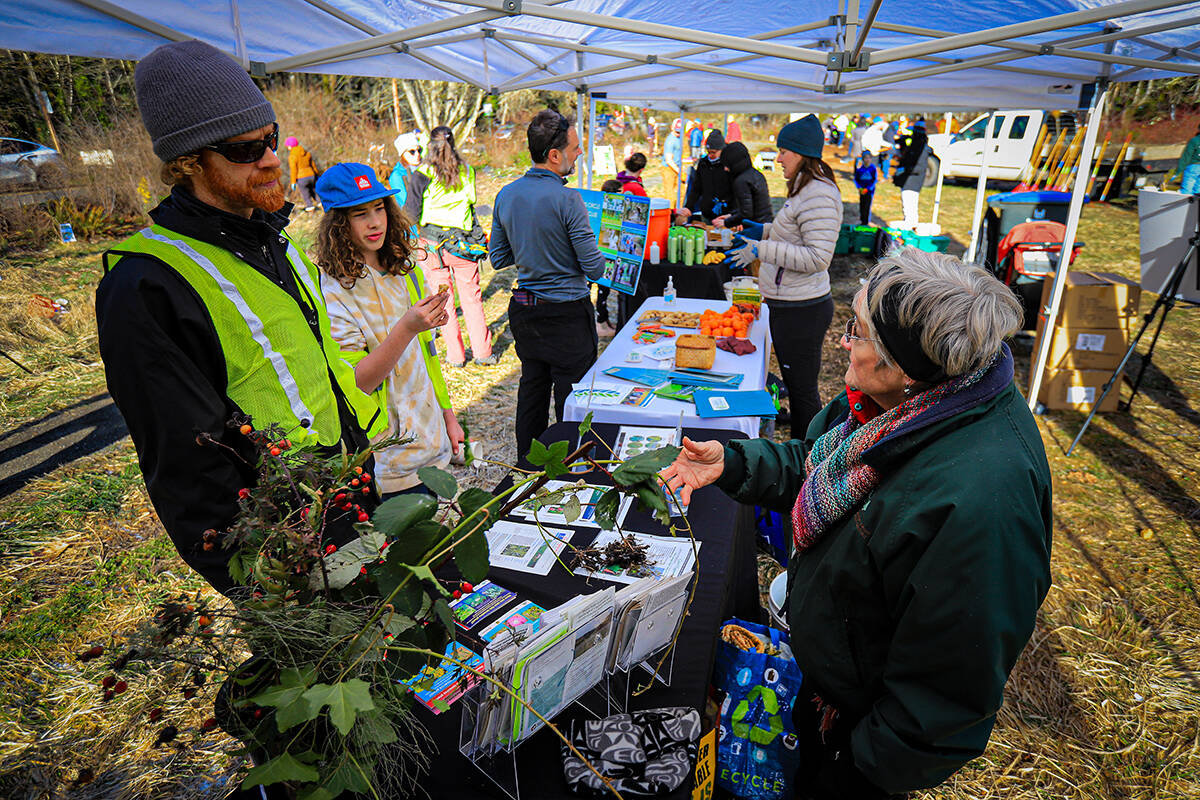Jeannette Franks has been waging a silent war in the parks and roadsides of Bainbridge Island for over 20 years. Her foes are noxious, numerous and sometimes deadly — but that has never stopped her.
Franks leads Weed Warriors, a coalition of volunteers dedicated to eradicating invasive plants on BI. The group meets, rain or shine, to pull, pick, mulch, dig and chop weeds around BI twice a month.
On Dr. Martin Luther King Jr Day, 115 volunteers met at Blakely Park to follow Franks into battle. Armed with shovels, rakes and other implements of destruction, the company prepared to fight a local axis of evil: eight yards of English ivy, Himalayan blackberry and spurge laurel. They also dropped over 100 wildflower seed bombs and spread 30 yards of woodchips for weed suppression and native plant health.
Volunteer Greg Geehan recounted that he and his wife started volunteering with Weed Warriors in about 2002, soon after meeting Franks and her late husband Dick Baker.
“We all appreciated the natural environments on Bainbridge Island,” Geehan said. “I eagerly joined their efforts and continue to do so to this day.”
The Warriors are now part of the environmental nonprofit Sustainable Bainbridge, which collaborates with BI’s parks district and the BI Land Trust, a conservation foundation that preserves and restores natural spaces. About 13% of BI is protected open space; the trust owns around 1,400 acres and the city owns about 1,100. Nearly all but 300 of that acreage is accessible to the public, trust information says.
Andrew Fraser, land trust stewardship manager, explained that while environmental groups have proliferated on BI in recent years, they each fill an important niche. “We can teach people about native plants and invasive species action, but our hands are tied — we can’t really go beyond our own lands,” Fraser said. “This is the great advantage that the Weed Warriors has. They’re not bound by restrictions that keep them to their own properties.”
Franks and a dozen or so volunteers have been at it since 2002. It started after Franks observed native species of all kingdoms — plants, animals, fungi — rebounding after she cleared out the invasive plants in her back yard. It was an “aha” moment, she said.
“Invasive species have evolved over the decades, because one hundred years ago, ivy wasn’t really a problem,” Franks said. “Once it started to be an obvious problem, it wasn’t really that hard to convince people that it was a bad thing.”
Along with those already mentioned, other common species like Scotch broom and English holly are on Franks’ hit list, plus a few that fly a bit more under the radar, like butterfly bush and herb Robert, or “Stinky Bob.” Spurge laurel, one of the worst weeds, is a newcomer.
“As an island, we are particularly at risk that aggressive weeds can move in and really do damage to our wetlands and water table,” Franks said. “But we also have a good opportunity to be successful, because it’s a finite space — once you get rid of all the ivy or knotweed, you have a pretty good chance of keeping it pristine.”
Fraser echoed Franks’ concern for Bainbridge’s wetlands and shorelines but added that invasive plants are not the only threat to BI’s most sensitive ecosystems. Historically, Fraser said, BI enjoyed beaches and bluffs that were much more sandy, robust interconnected natural spaces and wildflower-adorned tallgrass meadows. Development pressure “starved the beaches” via armoring and fragmented the wild spaces, but ornamental and invasive species made things worse.
“Native plants are better adapted to our conditions. By doing restoration, you’re hitting a whole swath of various ecosystem services that are far better served than non-native vegetation,” Fraser said. “You’re giving space to our native ecosystem processes — our carbon sequestration, our natural fire cycles, our water filtration — to function.”



